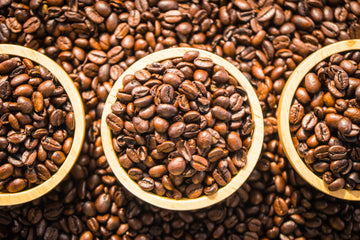When you pick up a bag of coffee, you may notice that some are labeled as single origin while others are called blends. But why do roasters blend coffee beans at all? Is it just a marketing strategy, or is there real craftsmanship behind it?
The truth is, blending coffee is both a science and an art. It’s not simply mixing beans together — it’s about creating a cup of coffee that is more flavorful, balanced, and consistent than any single bean could achieve on its own.
In this article, we’ll explore the reasons, goals, and methods behind coffee blending.
1. What Is Coffee Blending?
Coffee blending involves mixing two or more types of coffee beans from different origins, roast profiles, or processing methods. The goal is to create a harmonious and complex flavor that cannot be achieved with a single origin alone.
2. The Goals of Coffee Blending
Roasters blend beans for several purposes:
- To improve flavor: The ideal goal is to create a cup with a flavor profile superior to any individual component.
- To reduce costs: By blending high-quality beans with more affordable ones, roasters can deliver a coffee that tastes better than its price suggests.
- To build a signature taste: Many roasters design unique blends so that loyal customers can only find that exact flavor from them.
- To ensure consistency: Seasonal changes affect single-origin coffees, but blends help maintain a stable flavor year after year.
3. Why Not Always Drink Single-Origin Coffee?
High-quality Arabica beans from a single region can already make excellent coffee: clean, aromatic, and smooth. However, many single-origin beans also have limitations — they may be overly acidic, lack body, or feel too flat.
Blending helps overcome these weaknesses by combining beans with complementary characteristics. The result? A cup that’s more balanced, complex, and satisfying.
4. The Art of Balancing Flavors
Blending coffee is often compared to painting. Just as a painter mixes colors on a palette, a roaster combines beans to create new layers of flavor.
For example:
- A fruity Ethiopian coffee might be paired with a chocolatey Brazilian coffee to soften acidity and enhance sweetness.
- Indonesian beans, with their earthy and syrupy body, can be added to provide depth.
But blending isn’t just about throwing beans together. Sometimes two coffees may actually cancel out each other’s best qualities. That’s why blending requires both experience and experimentation.
5. The Science Behind Coffee Blending
Professional roasters follow a few key principles:
- Know your beans: Understand each coffee’s origin, processing method (washed, natural, honey, etc.), and how roast level affects flavor.
- Define the goal: Do you want more body? More acidity? A smoother finish?
- Assign roles: Each bean in the blend should serve a purpose — whether that’s adding sweetness, boosting aroma, or building crema.
- Choose the right number of beans: Most blends use 2 to 5 types of beans. Too many can make the flavor confusing.
- Experiment with ratios: A blend is rarely 50/50. Usually, one bean takes the lead while others play supporting roles.
6. Blending Methods: Pre-Roast vs. Post-Roast
There are two main blending approaches:
- Pre-roast blending (“green blending”): Different beans are mixed before roasting and roasted together. This method ensures even development and consistency but requires beans with similar size and density.
- Post-roast blending (“roast blending”): Each bean is roasted separately to its ideal level and then blended. This allows roasters to highlight the strengths of each coffee but requires more effort.
Neither method is universally better — it depends on the roaster’s goals and the specific beans used.
7. Blending Is a Journey of Trial and Error
Ultimately, coffee blending is not about following strict formulas. It’s about continuous tasting, adjusting, and experimenting. Roasters often design blend plans, try different ratios, and refine them through endless cuppings until they find the perfect combination.
This process makes coffee blending both a craft and an art form — one that requires technical skill, creativity, and patience.
Conclusion:
Blending coffee isn’t about masking weaknesses; it’s about celebrating the strengths of different beans and combining them into a cup that’s balanced, complex, and memorable.
For many roasters and coffee lovers, the joy of coffee lies not only in drinking it but also in the craftsmanship behind roasting and blending. After all, every great blend tells a story in the cup.
Next time you sip your favorite blend, take a moment to appreciate the craft behind its creation.






